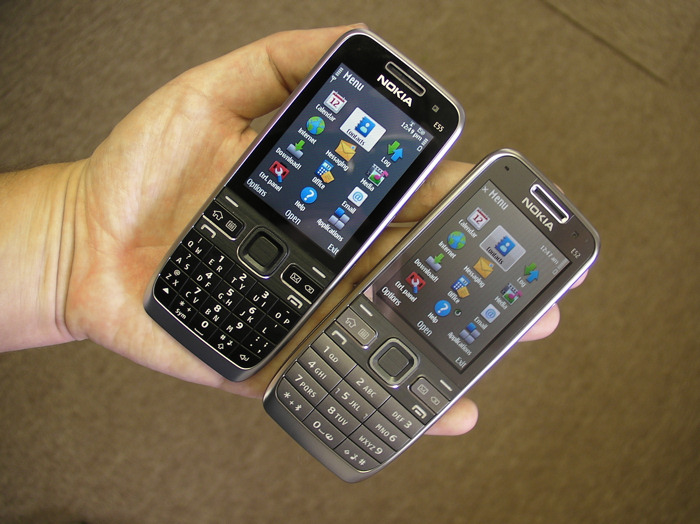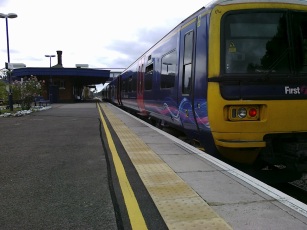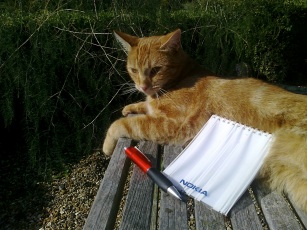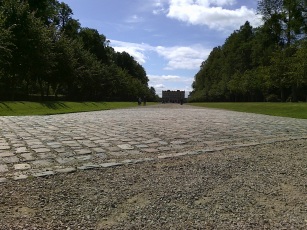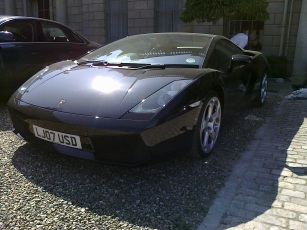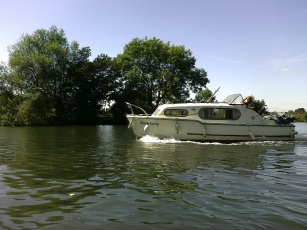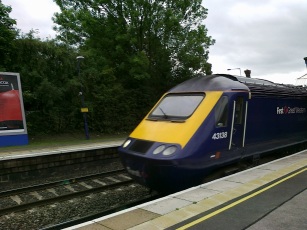Review: Nokia E52
Following on from my E55 review, I look at its sister device, this time with traditional keypad - is there anything to complain about in the perfectly formed little E52? Don't worry, I manage to find quite a bit 8-)
NB. Some of the material below is common to the Nokia E55. Rather than link a dozen times back over to my E55 review, I've included all the comment you need 'inline', below. So apologies for the necessary duplication, but at least new readers will get the full picture!
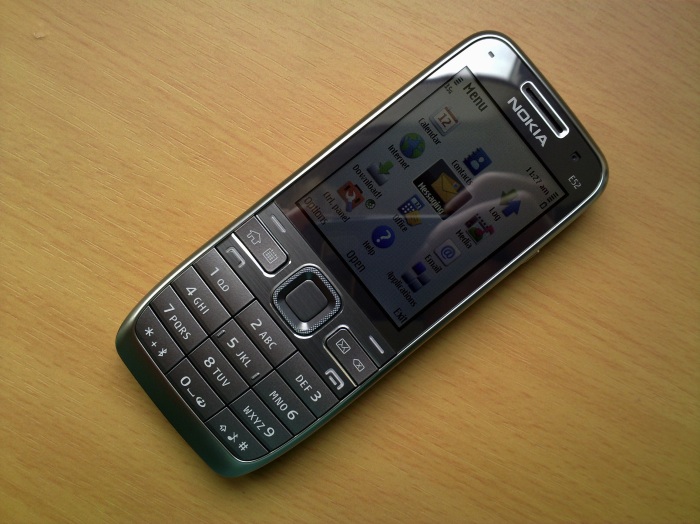
The candybar S60 smartphone, specifically the Eseries candybar S60 smartphone, has taken a while to fully mature, but I think we can safely say that we're close to the end of the design process. I simply don't believe it's possible to fit much more in. From screen to keypad to battery to wireless functions, it's - quite simply - all here, in a form factor that's under 10mm thick, only 54cc in volume and 98g in weight. Quite astonishing.
Tri band 3G, quad band GSM, Wi-Fi, A-GPS plus magnetometer, Bluetooth, 3.5mm audio and a cutting edge EDoF camera, are all impressive enough, but consider the fact that about half the E52's meagre bulk is the juggernaut BP-4L battery that normally powers the likes of the E90, E61i and E71 and the miniaturisation is even more staggering.

The E52's styling follows that of the E51 before it, though with the lighter aluminium rather than steel for the surrounds and battery cover, and with a slightly wider shell, to accommodate the much larger (2.4" vs 2.0") display. The result still feels fairly solid in the hand and you'll enjoy the feel very much on account of the aforementioned thinness, the 'interesting' texture on the battery cover and the uniquely textured d-pad. Attempting to twist the E52 does result in a small amount of movement, but nothing serious. The only build quality issue I had was that, like the E55, the keypad backlight leaks out disconcertingly from beneath the 'Home' key - hopefully Nokia can crack this on the head in subsequent production runs.
Unlike the E55 (and unlike the E51), the E52 is somewhat strangely garbed in a gun metal grey. I'm not normally too bothered by colour schemes, but here it directly impacts usability. The key legends are white, as on the E55 and E51, but here the background is grey and this creates problems in both bright conditions (reflections from the grey) and in dim conditions (where it's not dark enough for the keypad backlight to come on - the white legends simply don't have enough contrast to stand out from the body of the keys).

These issues can, obviously, be solved by bringing out a black keypadded-version - though we haven't heard of any plans at present. Some markets have a version with black key legends on 'gold' plastic, but this still doesn't help much. What's wrong with white on black, as God intended?
Confirming this key legend issue is a problem, I handed the E52 to my wife (a long time E51 user) and the first thing she said was "But I can't read any of the keys!". Lighting conditions at the time were 'average indoors'. Nokia has a real issue here.
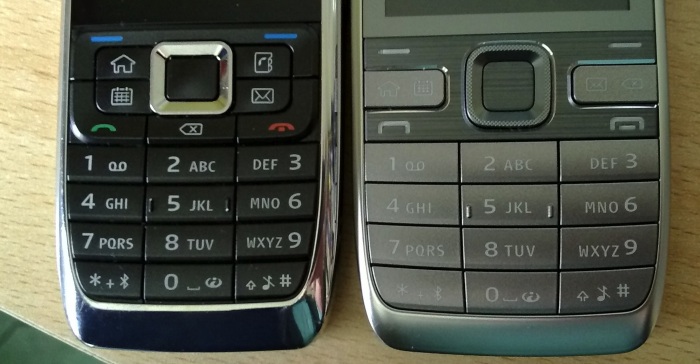
The E51 vs the E52 - note the difference having black for the key bodies - Nokia's designers should have their wrists slapped for the colour scheme of the E52!
Working around the E52:
- There's a basic camera shutter button on the right hand side, along with volume/zoom/voice command keys
- There's a power button (nice to see this separate and not built-into the 'hang up' key) and 3.5mm audio jack on the top
- There's a microUSB port extremely neatly recessed (I missed it at first!) on the left. And yes, as with all Nokia's latest, charging is also via microUSB, whether from the supplied mains charger or via data lead from a desktop.
- There's a microSD slot too, but this is concealed by the battery cover - not a bad design decision as this keeps the sides of the device cleaner and stops dust or damage to the card.
In terms of software, the E52 is very recognisably S60 3rd Edition Feature Pack 2, the package is very similar to that in the familiar E75, though in the intervening months Nokia has upgraded its Webkit-based browser: v7.1, here is much faster and has a more streamlined interface (though there's still no way to copy text from a page or open a new window - sigh). The new Eseries PIM apps have been optimised, Nokia Maps has become Ovi Maps 3.0 (complete with lifetime pedestrian navigation - and 10 day 'drive' trial) and 'Home media' has appeared, to provide UPnP functionality. Oh yes, and Nokia's Eseries team has licensed a whole bundle of third party software, of which more later.
On the downside, and apparently by design (I checked with the product team at Nokia), both Podcasting and Internet Radio are conspicuous by their absence. I'm told that many people have already clamoured for their reinstatement and that Nokia are considering adding them back in a future firmware. I hope they do, since lack of Podcasting is a deal breaker for yours truly.
As you can see from the photo above, the only non-cosmetic difference between the E55 and E52 is the physical form of the keypad/keyboard, and this is where personal preferences come into play. The E52 is very much the 'play-it-safe' variant, with lovely large keys in standard T9 formation - they're well sculpted and with decent key travel and definite 'click' action. As Asri noted a week or so ago, the E52 has to rank as having, cosmetics apart, one of the best S60 keypads ever made (in case you're interested, I maintain that the Nokia N93 had the best of all!). And, with the familiar layout, this will sell well to standard businesses and mobile professionals, whereas the sales of the E55 will doubtless veer more towards the geek sector.
Now, along with the E55, one of the biggest Unique Selling Points of the E52 (other than its sheer size/form factor) is the EDoF (Extended Depth of Field) camera. This is a new idea, borne of the digital age. Rather than having a bulky and expensive auto-focus mechanism, the idea is that a cheaper fixed focus camera can be dramatically improved by using a custom lens which has been designed to focus the RGB components of light differently. When an image is captured (effectively three 'photos', one for each of the RGB components), every part of the photo's viewing area is analysed, with the sharpest of the RGB images determining the detail used for that part, with the other image supplying appropriate coloration. In this way, the normal depth of field for a fixed focus camera is extended and objects a metre or so away can be captured fairly sharply, something which wouldn't be possible with a vanilla fixed focus camera.
In reasonably good lighting, the results can be tremendous for such a small camera/sensor unit. Here are some samples, click each to download or view full-size:
Note the depth of field, the EDoF works well in good light conditions!
More EDoF examples from the E52/E55... Objects both close and far away are all in 'focus'
And here's where things break down: firstly, it's still a small camera with small sensor and in dim/indoor
conditions you'll be struggling as with any other similar unit - the E52 is not an N95...; secondly, there's a limit
to how far EDoF increases the depth of field - get within about half a metre of an object and it will start to get blurry...
Ah yes, my new car [you wish - now get back to work! /Crack - Rafe]; and a snap of a sign, taken from about
a metre away - note how this is within the EDoF (range) and how the text is pretty crisp as a result,
despite there being no actual focussing involved
Some motions shots - the EDoF camera seems to take photos with quite fast shutter times. The first photo was with both my
boat and the object boat moving, while the second is of a train going through the station at high speed
(estimated 80 to 100mph) - the shutter speed was so fast that the train almost looks stationary. Impressive.
Notably, the E52/E55's camera also includes a panorama mode, in the same manner as in the new N86 -
except here you get to stitch five photos - here's an attempt of mine, taken in cloudy conditions.
The actual stitching together takes around a minute, so don't expect to shoot panoramas quickly, back to back!
The extra image processing can't work miracles however, and once the light levels go down you get the same reduction in depth of field, the same sensor noise and the same blurred subjects as with any other small-lensed fixed focus camera. It's also worth noting that because the lens is fixed focus, there also can't be a 'Close up' (or 'macro') mode, so anything closer to the E52 than about half a metre is destined to stay blurry and out of focus.
That said, I was impressed by the EDoF camera and would be happy using it as an ad-hoc snapper on the family day out - the results are usually quite good enough for even a discerning family album.

Video capture is at VGA resolution (the new standard, it seems in phone cameras) and at 15 frames per second. I was impressed by the colour handling here, by the pre-focus in video mode (to a couple of metres, something which the N97 still can't do, to name but one device) and by the quality of the captured audio. Again, for personal use, I don't think any user could complain about performance in this area.
Here's a sample video (4MB, click the photo to play or download) - one of
the E52/E55's strongpoints, I think, despite the 15fps frame rate
And so to other aspects of the E52. The front panel keys are elegantly sculpted and a pleasure to use, while the 2.4" display is the same as the six month old E75's - small for a 2009 smartphone, but well formed in the context of such a small device and, most importantly, transflective, meaning that it's beautifully clear in sunlight - as with the E75's and E71's (etc.) displays, there are no lighting no-go areas for this screen (unlike those on the 5800, N97 and many competitors).
The (mono) loudspeaker on the E52's rear is thankfully crystal clear and loud - great for listening to podcasts around the house. Music sounded clear but without much quality or bass over the supplied 3.5mm '4-way' stereo headset/mike, though plugging in a 'pro' set of headphones showed that the tinny sound wasn't the phone's fault. Nokia do sell high quality in-ear headsets with a microphone breakout box, if you really want to pursue hi-fi-like music on the move on the E52.
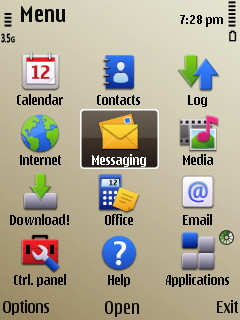
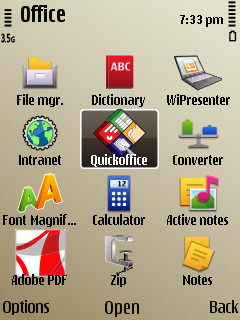
Nokia's Eseries application set seems to have stabilised (albeit with the aforementioned unfortunate omissions) - it's worth noting that, at long last, elements of the Nseries photo gallery have made their way into an Eseries phone, with the slick, tag-based carousel now popping up when you click on 'Gallery | Images'. Unfortunately, the list of items then presented includes videos as well. Along with Gallery | Videos and Video centre, there are now three near identical ways into your videos. Nokia, the way you present media is just appallingly messy these days - please sort it out!
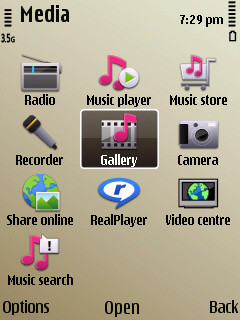
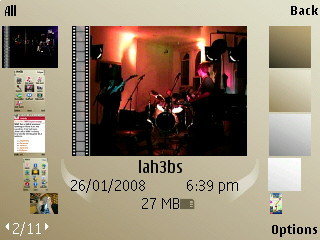
Gallery leads to Photos, which leads to - ahem - your photos AND videos
As mentioned elsewhere, video playback in S60 3rd Edition Feature Pack 2 is pretty mature now and virtually every MP4, 3GP and FLV video I threw at the E52 was handled without issue. WMV proved slightly more erratic, but as ever, digital video codecs are an utter black art and Microsoft is the dark wizard, WMV is never trivial to handle.
In terms of business software (this is an Eseries, after all), there's the new Nokia Messaging email system, incorporating pseudo-push email from POP3 or IMAP accounts. As I've remarked before, this is something of a love it or hate it solution, but it's certainly an easy way into mobile email for most, if not all, people. The full, editing version of Quickoffice v5 is supplied in the firmware, though the usual upgrading option to v6.2 wasn't present, curiously - maybe this will come as well in an imminent firmware upgrade or in a catalogue update from Quickoffice themselves?
The two one-touch application shortcut keys work well, despite their diminutive size, I love the way assignments can be made to a 'long press', effectively giving you four hardware application buttons and speeding up common access significantly.
The 'new' S60 tweaks introduced for the E71 are here on the E52 as well, of course:
- the Business/Personal home screen 'modes' (most useful, IMHO, for quick theme switching!)
- the quick matching of contacts when typing in a name on the home screen - very useful day to day as a quick way to call or message someone
- word auto-completion when entering text - the suggested word is shown completed in pale blue and a tap on the space bar accepts the suggestion. This is a little gimmicky - in almost every case where a long word is being spelt out, a shorter long word is popped up first and you end up tripping over yourself to make it right. For example, "communications". "communication" is suggested only, leaving you to either spell the word out in full, or accept the singular and then backspace to fiddle around and battle the software to add an extra letter. Similarly with "difficulty" and many, many other long English words.
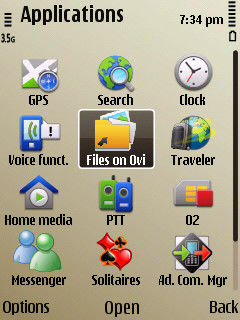
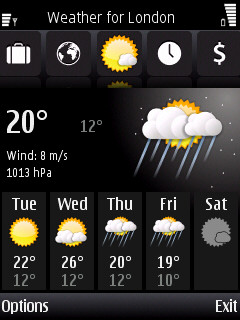
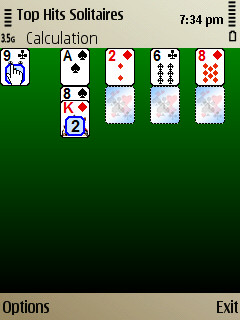
Of special interest is that a number of third party applications have been fully licensed by Nokia for the E52 and E55 (though their default position in the applications menus differs slightly, rather curiously).
WiPresenter (from Psiloc) lets you use both Bluetooth and Wi-Fi to control a Powerpoint presentation on a PC, while Font Magnifier (also from Psiloc) does exactly what it says, allowing system-wide font substitutions (between 50% and 140% of the original font size) to make text easier to read (or to fit in more text on-screen) in any application. Psiloc World Traveler (sic) is actually freeware anyway but it nice to see included here, providing Worldmate-like weather, currency and time information. Top Hits Solitaires (from Epocware) is a first class set of hundreds of card solitaire variations and one of my favourite commercial S60 games. Advanced Communication manager (from WebGate) is a call filtering application and Block Cascade is a Flash-based 'Columns' clone from Gamelion. Overall, a worthwhile set of extras, even if it does mean more icons for the new E52/E55 owner to assimilate!
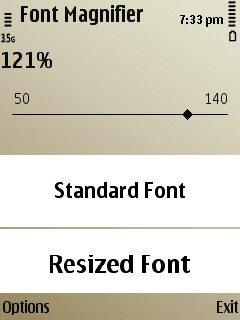
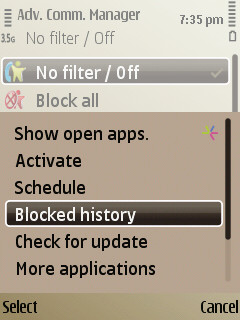
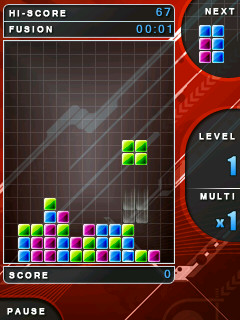
Also hinting that the current v21 firmware is incomplete is that the Ovi Store client is missing at first. Instead, it's listed in the front screen 'Download!' utility, so I suppose most users will get there in the end. Doubtless it'll be in the firmware for real for v22. The N-Gage client is present, but it's also curiously implemented in that its not actually in the firmware - it has been installed as an add-on at the factory. Bizarre.
There's accelerometer-driven display rotation in almost all applications (including the home screen and menus) but, somewhat strangely, I couldn't find an explicit way to turn this behaviour off - turning ALL sensor operations off does the trick, thankfully. Although clever, I end up disabling this on any phone I use, and I can only think that adding a dialog line to control this is another small omission. As it is, I lose the 'flip to silent/snoozing alarms' function if I don't want display auto-rotation, which is annoying.

And so we come to the moment of truth. Just how good is the Nokia E52? On the one hand, it's just a humble T9-keypadded, small-screened (relative to the N97 and iPhone and other 'champions' of 2009), S60 candybar, but the E52 is (potentially) as good as it's possible to get within that form factor. And, if you need a business-focussed smartphone that's tiny and unobtrusive, something that will slip in any pocket and not spoil the line of your suit, this form factor makes an awful lot of sense. Within something that's almost as small as phones can go, you've got full email, full Office editing, full Web access, and much more, all in a device that will happily go for several days on one charge or stand up to a day of voice calls without flinching.
However - and I absolutely hate the fact that every review of a Nokia smartphone I do has to have a 'however' section near the end - please, Nokia, just for once, make a smartphone that doesn't manage to shoot itself in the foot at some point - there are two problems, as described above: by going with white key legends on grey plastic (on our review device), the usability of the E52 is seriously hampered in some light conditions - the black keypad on the sister E55 is worlds better. And to omit Podcasting and Internet Radio on purpose, presumably because they're not 'business' apps, but then include N-Gage, is just silly. And, to be generous, I'm not going to mention the user interface fiasco that's video handling...
The pairing of the E52 and E55, with near identical hardware, does make a lot of sense from Nokia's point of view, in terms of economies of manufacturing. It also makes sense from a customer's point of view, giving everyone the chance to choose their text input system. If the E52 is more your cup of tea then I can recommend it in the long term, but only after the firmware has been filled out properly and you might also want to wait until Nokia produce a version with a E55/E51/E75-like black keypad.
Steve Litchfield, All About Symbian, 27 August 2009 [Some photos by Rafe]
Bonus links:
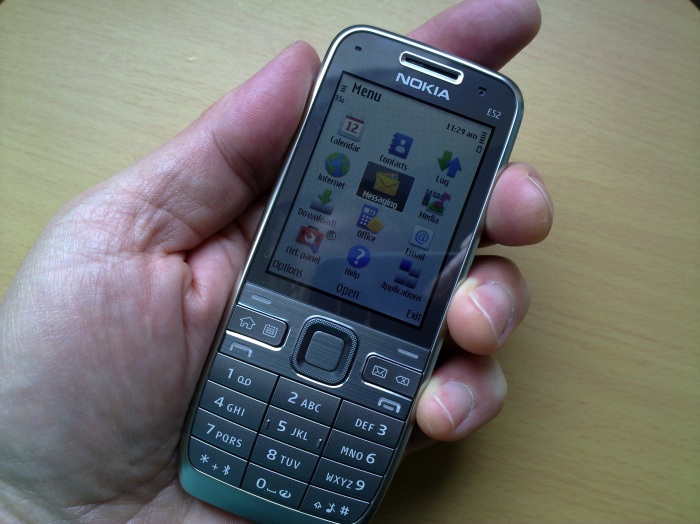
Reviewed by Steve Litchfield at


